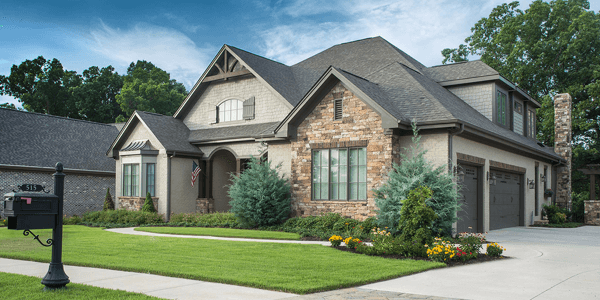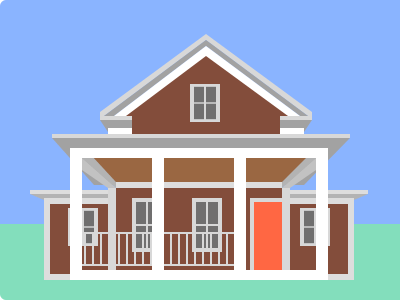
Custom Homes
There are many custom homes that you can choose from, but the main five that we'll be discussing in this article break down into the following:
-

-

Custom Homes
-
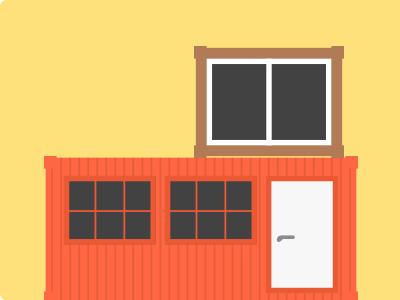
Shipping Container Homes
-
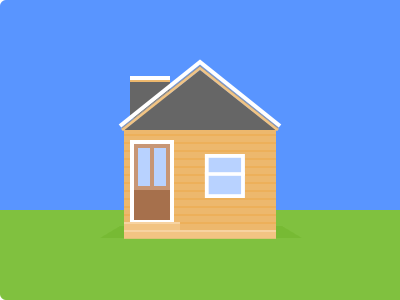
Tiny Homes
-
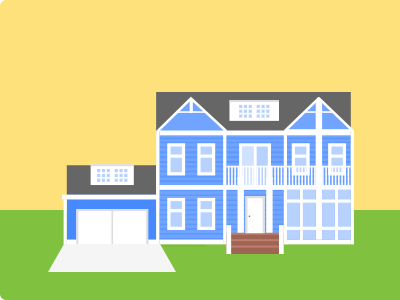
Modular Homes
Production Builders
Different from custom homes, production builders are generally hired to build on pre-owned land with a set standard of guidelines for the property. You'll usually find this in community housing or on larger retirement properties. Sometimes the homeowner will have a say in production as the community is being built, and sometimes if a new homeowner is buying property in said community they'll still have the option to choose which features are in the home, just not to the extent that a custom built house would be. Also available for homeowners are option in townhouses, apartment buildings, single-family homes, and condos (3). According to the National Association of Homebuilders (NAHB), standards for production builders include:
- • Both the house and the property as one unit package
- • Several different blueprints or fully constructed homes to choose from
- • Homeowners will be able to choose their homestyles to a certain extent
- • Pricing for first time buyers, experienced homeowners, and luxury units depending on the property
Home Builders
As the blanket term for any company that specializes in constructing new homes, home builders receive a special spot on the list simply for the versatility that the expression can have. This can mean custom home builders, as mentioned above, spec home builders, which essentially charge by the lot, and of course production builders, which do both (4). If you're ready to purchase a home, looking up home builders is a good way to start. There are also other government resources you can use for references (5). Additionally, recent economic polls reveal that it's becoming a good time to buy new property (6).
Back to topHow to Shop with New Home Builders
New construction is always different from buying a previously owned home. For example, you have a lot more say into what goes into your home and there's no previous influence in the price negotiations. So keep your budget and goals in mind when talking to your new home builders. Follow these steps on everything you can choose from to get a more clear idea of what choices you can make (7).
- • Consider everything - Weigh your options. Should you go with custom, production, or spec builders? What features do you really want in your home?
- • Look at the Neighborhood - Is this where you want to be? Is it to close to other homes? Too far apart? What's the community like?
- • Research your Contractors - Look at the BBB and reviews online.
- • Talk to your Builders - Get a good idea of what's standard in their homes and what costs extra.
- • Home Warranty and Inspection - It's your dream home, you're going to want to look at the insurance
- • Close - Seal the deal and enjoy your new home
How to Shop with New Home Builders
One of the newer forms of housing to hit the market, container homes are an affordable solution in fully customizable options for a home. Because U.S. housing prices have risen twice as fast as U.S. wages, this has left many people looking for affordable solutions when it comes to long term housing (8). Thus, the container homes industry has bloomed. Due to the simplicity in design, this left for a lot of customization and personal design in each home (9). A shipping container house can also be stacked on one another, creating floors or levels (10). Affordability coupled with unique design options are making containers homes a new and growing market. To get a better idea of why people prefer cramped, old shipping containers, take a look at the prices they are being offered at:
- • Some single units - $800
- • Medium sized units - $1800
- • Larger sized units - $5,000
Home Restoration
When you're on the market for new housing but either new homes or building from the ground up isn't in your budget, consider home restoration as an option. Restoration is simply the act of returning a structure to its former condition (11). This is a great option to any homeowners who either are, are married to, or know a contractor. But there are plenty of DIY projects a normal household can accomplish without any training (12). Painting, plastering holes in walls, and fixing up old fixtures are all easily doable for anyone with the time and effort. Other DIY restoration projects include:
- • Gardening
- • Replacing worn carpeting
- • Upgrade appliances
- • Insulate your walls and attic
- • Go Green
- • Try brighter lighting
- • New windows
The Tiny House Movement
In response to the housing market increasing exponentially in price, smaller homes have seen a huge surge in popularity. Little houses are typically less than 500 sq. ft. in terms of space, with the design of the structure attempting to make up for cramped conditions (13). Much like the shipping containers, tiny homes are becoming the affordable alternative to "right-sized" houses, with ranges varying all over the place. Some homes go for as little as $28,000 dollars with some of the more high end models going for roughly $66,000 and up (14). That's an entire home for the price of a used car. There does seem to be a slight difference in "small" houses vs. "tiny" homes, in relation to size (15). However, all size is relative when you're living with yourself or with another. In any case it seems as though the tiny home movement isn't just here to stay, it may begin to gain popularity with the rising costs of living (16).
Back to topModular Homes
To keep costs down, imagine a home that you could pick from that would be delivered to the property lot you purchased? Picture choosing a house that would be constructed off-site and shipped to you. That is the reality of modular homes. Modular homes are first built in a factory and then erected on the property that you own (17). Then if you're selling the property lot or the home, the building can be packed up and moved again for convenience. You can choose from a large amount of different styles and designs, and they'll be trucked out to the land you own. Basic prefabricated modular homes can cost around $45,000 with medium quality units ranging up to $100,000. The larger and highest quality prefabs run about $300,000 and up.
Back to topManufactured Homes
Similar to modular houses but with more permanence set in mind, manufactured homes are also constructed in an off-site facility and delivered to a lot. Manufactured housing tends to be the largest source of unsubsidized affordable housing available in the United States (18). Although easily transportable, manufactured homes are not meant to be temporary housing and meet all the guidelines set up by the Department of Housing and Urban Development. Some other benefits to manufactured homes include:
- • 60% of homes in the U.S. that cost below $125,000 are manufactured
- • The median income of the average manufactured homeowner is only $29,000
- • Manufactured homes are more energy efficient than their counterparts
- • They also tend to save on water costs
- • With the cost of a property lot the manufactured home costs ~ $203,000
References
- Wardell, Charlie."Production Versus Custom Home Builders: What's the Difference?". NewHomeSource. Retrieved 10 August 2017.
- Lerner, Michele."How to Fulfill Your Fantasy With a Custom Home". realtor. Retrieved 10 August 2017.
- "Production Homes". NSHB. Retrieved 10 August 2017.
- "Home Builders - Understanding the difference between a Custom Builder, a Spec Builder and Tract Builders". Peak Construction Company. Retrieved 10 August 2017.
- "Monthly New Residential Construction, June 2017". Census.gov. Retrieved 10 August 2017.
- "National Housing Market Summary". HUD PD&R. Retrieved 10 August 2017.
- Stock, Judith. Beuerlein, Karin."How to Buy in New Construction". HGTV. Retrieved 10 August 2017.
- "US housing prices are rising twice as fast as wages". New York Post. Retrieved 10 August 2017.
- "Breathtaking Homes Made from.. $1800 Shipping Containers". Organics.org. Retrieved 10 August 2017.
- Howard, Brian."45 Amazing Homes and Offices Built from Shipping Containers". Popular Mechanics. Retrieved 10 August 2017.
- Weiland, Noah."Mastering the Art of Home Restoration: A Julia Child Sequel". New York Times. Retrieved 10 August 2017.
- "30 Tips for Increasing Your Home's Value". DIY network. Retrieved 10 August 2017.
- Carlyle, Erin."12 Tricked-Out Tiny Houses, And Why They Cost So Much". Forbes. Retrieved 10 August 2017.
- Kulp, Kayleigh."Tiny houses grow in popularity, yet drawbacks abound". CNBC. Retrieved 10 August 2017.
- Pontolilo, Brian"What's the Difference? Small Home vs. Tiny House". Fine Home Building. Retrieved 10 August 2017.
- "Tiny house movement". Wikipedia. Retrieved 10 August 2017.
- Jessica."10 Basic Facts You Should Know About Modular Homes". Freshome. Retrieved 10 August 2017.
- "Sustainable and Affordable: New Options in Factory-Built Housing". EESI. Retrieved 10 August 2017.
Select your Custom Home project
Service Cost Calculator
Enter service and
zip code to view
cost breakdown
